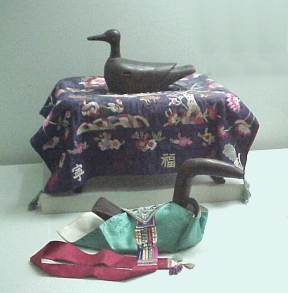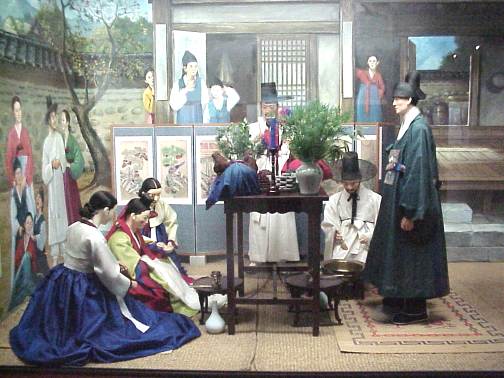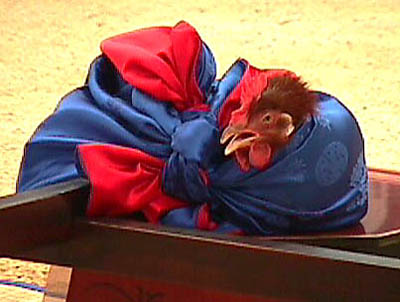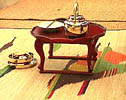Taerye (Great Ritual) means the marriage between a man and woman and it represents the joining of two families, rather than the joining of two individuals. Steeped in traditional Confucian values, the ceremonies and events surrounding the actual marriage were long and elaborate, from the pairing of the couple to the rituals performed after the ceremony.
In the traditional Korean marriage, the elders of the prospective bride and bridegroom's families decided on all matters regarding the wedding, including the decision of whether or not to marry their son and daughter to each other.
Napchae (Date Setting)
After confirming each family's decision to marry their son and daughter through a matchmaker, the family of the bridegroom-to-be sent the hour, day, month and year of his birth by the lunar calendar (known as the Four Pillars) to the family of the bride-to-be and, in return, her family informed the family of the bridegroom-to-be the date of their wedding. The family of the future bridegroom then sent a letter of marriage and wedding presents to the family of the future bride.
After confirming each family's decision to marry their son and daughter through a matchmaker, the family of the bridegroom-to-be sent the hour, day, month and year of his birth by the lunar calendar (known as the Four Pillars) to the family of the bride-to-be and, in return, her family informed the family of the bridegroom-to-be the date of their wedding. The family of the future bridegroom then sent a letter of marriage and wedding presents to the family of the future bride.
Napp'ae (Exchanging Valuables)
Before the wedding, the groom's family sent presents to the bride and her family in a box called a Ham. Additionally, the Hamjinabi(person who delivered the Ham) and a small group of close friends of the groom also took a pot of Bongch'i Deok (red bean rice cake) from the groom's family. The bride's family would have a small party for the group, offering them food and drink for their efforts. The ceremony of delivering the Ham has evolved into a major event for friends of the groom, with the bearers "selling" the contents of Ham to the bride's parents.
The Ham usually contained 3 items. The Honseo (marriage paper), wrapped in black silk, specified the name of the sender and the purpose (marriage) of sending. It symbolized the dedication of the wife to only one husband. The wife was to keep this document with her forever, having it buried with her when she died.Ch'aedan was a collection of red and blue fabrics, used to make clothing. The blue fabrics were wrapped with red threads, while the red fabrics were wrapped with blue threads. The two colors represented the philosophy of Eum/Yang (Yin/Yang). The Honsuwas a collection of other valuables for the bride from the groom's parents.
Before the wedding, the groom's family sent presents to the bride and her family in a box called a Ham. Additionally, the Hamjinabi(person who delivered the Ham) and a small group of close friends of the groom also took a pot of Bongch'i Deok (red bean rice cake) from the groom's family. The bride's family would have a small party for the group, offering them food and drink for their efforts. The ceremony of delivering the Ham has evolved into a major event for friends of the groom, with the bearers "selling" the contents of Ham to the bride's parents.
The Ham usually contained 3 items. The Honseo (marriage paper), wrapped in black silk, specified the name of the sender and the purpose (marriage) of sending. It symbolized the dedication of the wife to only one husband. The wife was to keep this document with her forever, having it buried with her when she died.Ch'aedan was a collection of red and blue fabrics, used to make clothing. The blue fabrics were wrapped with red threads, while the red fabrics were wrapped with blue threads. The two colors represented the philosophy of Eum/Yang (Yin/Yang). The Honsuwas a collection of other valuables for the bride from the groom's parents.
Wooden Goose/Wedding Ducks (Kireogi) | ||||||||||
|


